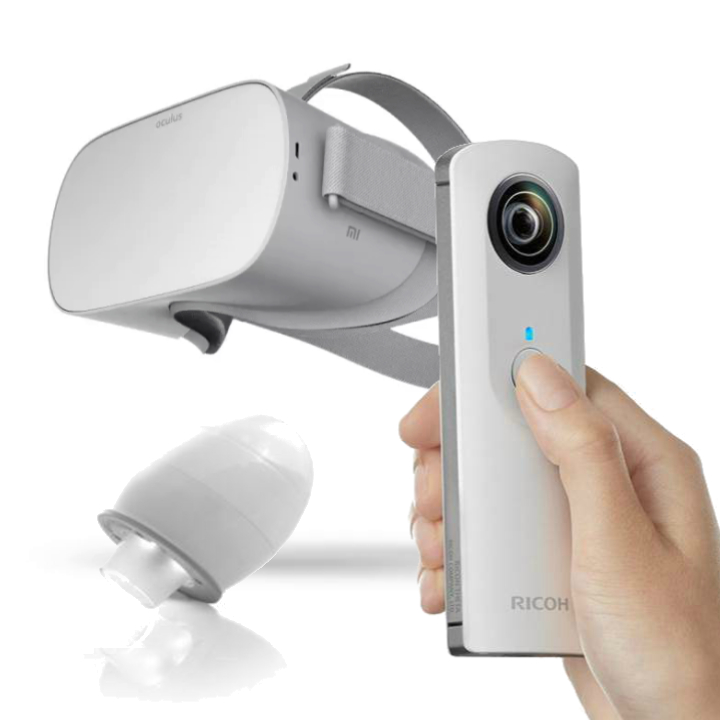Experiencing (from) the inside – Mediated perspectives in kindergartens
DOI:
https://doi.org/10.7577/formakademisk.4637Keywords:
digital images, spherical media, microscope, 360-images, kindergartenAbstract
This paper presents a case study of preservice kindergarten teachers’ use of new form of digital imagery. The paper introduces spherical cameras and digital microscopes and discusses their affordances when introduced in practical use in in teacher education and in kindergartens. The use in kindergartens was introduced through a class of 34 teacher students in kindergarten education. The students were specializing in Arts and design at Western Norway University of Applied Sciences. The use of images from spherical cameras and digital microscopes is discussed and analysed, based on data from student responses through two questionnaires, group presentations and discussions in class, and an analysis of various media material produced by students.
References
Bolter, J. & Grusin, R. (2000). Remediation: Understanding New Media. MIT Press.
Conole, G. & Dyke, M. (2004) Understanding and using technological affordances: a response to Boyle and Cook, ALT-J, 12(3), 301-308. https://doi.org/10.3402/rlt.v12i3.11261
Gadamer, H.-G. (1986). The relevance of the beautiful: Art as play, symbol and festival. In R. Bernasconi (Ed.). The relevance of the beautiful and other essays. (Trans. Nicholas Walker, pp. 3-53). Cambridge UP. (Original work published 1974)
Gadamer, H.-G. (1993). Truth and Method. (2nd Ed., Trans. J. Winsheimer & D. G. Marshall). Sheed & Ward. (Original work published 1989)
Gibson, J. J. (1979). The Theory of Affordances. In The Ecological Approach to Visual Perception. Houghton Mifflin.
Jacobsen, H. & Kofoed, T. & Loi, M. (2015). Barnehagemonitor 2015. Den digitale tilstanden i barnehagen [Kindergarten monitor 2015. The digital state of kindergarten]. Senter for IKT i utdanningen [Center for ICT in education.]. https://www.udir.no/globalassets/filer/tall-og-forskning/rapporter/2016/barnehagemonitor-2015.pdf
Johansen, S. L. (2015). Barns liv og lek med medier [Children's life and play with medias]. Cappelen Damm Akademisk.
McLuhan, M. (1964). Understanding Media: The Extensions of Man. MIT Press.
Merleau-Ponty, M. (1994). Kroppens fenomenologi [Phenomenology of Perception]. (Trans. B. Nake). Pax. (Original work published 1945)
Murray, J. (2011). Inventing the Medium – Principles of Interaction Design as a Cultural Practice. MIT Press.
Norwegian Ministry of Education and Research (2017) Framework Plan for the Content and Tasks of Kindergartens. Norwegian Ministry of Education and Research. https://www.udir.no/globalassets/filer/barnehage/rammeplan/framework-plan-for-kindergartens2-2017.pdf
Panofsky, E. (1991). Perspective as Symbolic Form. (Trans. C. Wood). Zone Books.
Roschelle, J. (2003) Unlocking the learning value of wireless mobile. Journal of Computer Assisted Learning devices, 19(3), 260-272. https://doi.org/10.1046/j.0266-4909.2003.00028.x
Thestrup, K. (2013). Det eksperimenterende fællesskab. Medieleg i en pædagogisk kontekst [The experimental community. Mediaplay in a pedagogical context]. (Phd thesis). Aarhus Universitet.
Rettberg, J.W. (2014). Seeing Ourselves Through Technology: How We Use Selfies, Blogs and Wearable Devices to See and Shape Ourselves. Palgrave Macmillan. https://doi.org/10.1057/9781137476661

Downloads
Published
How to Cite
Issue
Section
License
Copyright (c) 2021 Ingvard Bråten, Jon Hoem

This work is licensed under a Creative Commons Attribution-NoDerivatives 4.0 International License.
Authors who publish with this journal agree to the following terms:
- Authors retain copyright and grant the journal right of first publication with the work simultaneously licensed under a Creative Commons Attribution 4.0 License that allows others to share the work with an acknowledgement of the work's authorship and initial publication in this journal.
- Authors are able to enter into separate, additional contractual arrangements for the non-exclusive distribution of the journal's published version of the work (e.g., post it to an institutional repository or publish it in a book), with an acknowledgement of its initial publication in this journal.
- Authors are permitted and encouraged to post their work online (e.g., in institutional repositories or on their website) prior to and during the submission process, as it can lead to productive exchanges, as well as earlier and greater citation of published work (See The Effect of Open Access).
- The author(s) must manage their economic reproduction rights to any third party.
- The journal makes no financial or other compensation for submissions, unless a separate agreement regarding this matter has been made with the author(s).
- The journal is obliged to archive the manuscript (including metadata) in its originally published digital form for at least a suitable amount of time in which the manuscript can be accessed via a long-term archive for digital material, such as in the Norwegian universities’ institutional archives within the framework of the NORA partnership.
The material will be published OpenAccess with a Creative Commons 4.0 License which allows anyone to read, share and adapt the content, even commercially under the licence terms:
This work needs to be appropriately attributed/credited, a link must be provided to the CC-BY 4.0 licence, and changes made need to be indicated in a reasonable manner, but not in any way that suggests that the licensor endorses you or your use.



